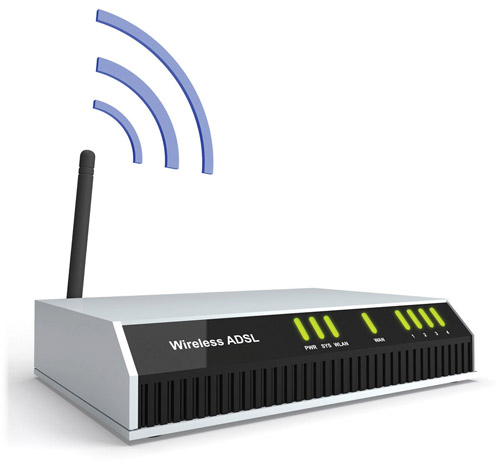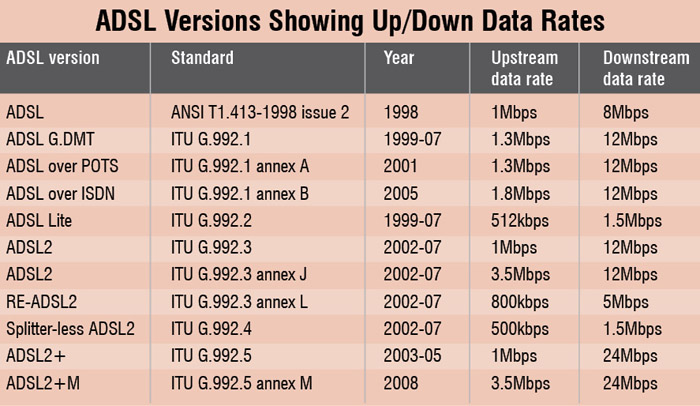Services like video streaming, voice-over Internet protocol (VoIP), online video gaming, online shopping, telemedicine and broadcasting of TV programmes are a few things that require high-speed Internet access for effective operation. Existing high-speed Internet services like co-axial cable, analogue modem, cable modem, integrated services digital network (ISDN), etc, are not capable of delivering such data rates due to their inherent limitations.
The copper lines used for telephone networks carry voice signals in the frequency range of 300Hz to 3400Hz only. It has been found that these unshielded copper lines are capable of transporting signals at much higher rates over long distances. One such example is local area network (LAN), where these copper lines carry signals in the frequency range of 6MHz or more. So, it is possible to use these copper lines for data transportation along with voice services.

Re-use of copper lines seems to be best suited since millions of connections for telephone networks are already in place. This implementation requires equipment to be added to the telephone exchange along with a small installation at the user’s premises. The digital subscriber line (DSL) is a transmission technology that utilises this available bandwidth to provide high-speed access to the Internet.
Advances in electronics have largely made DSL a successful, faster and cheaper technology. All types of DSL utilise very complex digital-signal processing to overcome the inherent limitations of the existing copper pair. Until late 1990s, the cost of digital-signal processors for DSL was very high. But, the rapid development in VLSI technology has significantly lowered the cost of signal processors, which supported DSL as a commercially-successful technology.
DSL family is collectively termed as xDSL and includes several different technologies like IDSL, HDSL, SHDSL, ADSL, RADSL, UDSL, Etherloop, VDSL and GDSL. These technologies vary from each other in terms of speed of transmission, symmetric and asymmetric bandwidth allocation, variation in speed between upstream and downstream, and maximum distance of signal transmission.
Integrated DSL (IDSL) is an ISDN based technology, which provides data-flow rates of 144kbps up to a distance of 5.4 kilometres. High bit-rate DSL (HDSL) is a symmetric technology that offers speeds of 2.048Mbps over two copper pairs up to 4.6 kilometres.
Single-pair high-speed DSL (SHDSL) is also a symmetrical technology that covers about three kilometres. With one pair of copper line, the SHDSL having a multiple of 64kbps payload provides symmetrical download and upload data rates ranging from 192kbps to 2.304Mbps.

Moreover, SHDSL provides symmetrical data rates from 384kbps to 4.608Mbps in 128kbps increments for two-pair applications. Asymmetric DSL (ADSL) offers an upstream data rate of 500kbps and a downstream data rate of up to 8Mbps. Rate-adoptive DSL (RADSL) adjusts its upstream and downstream data rates depending upon line noise and distance covered.







